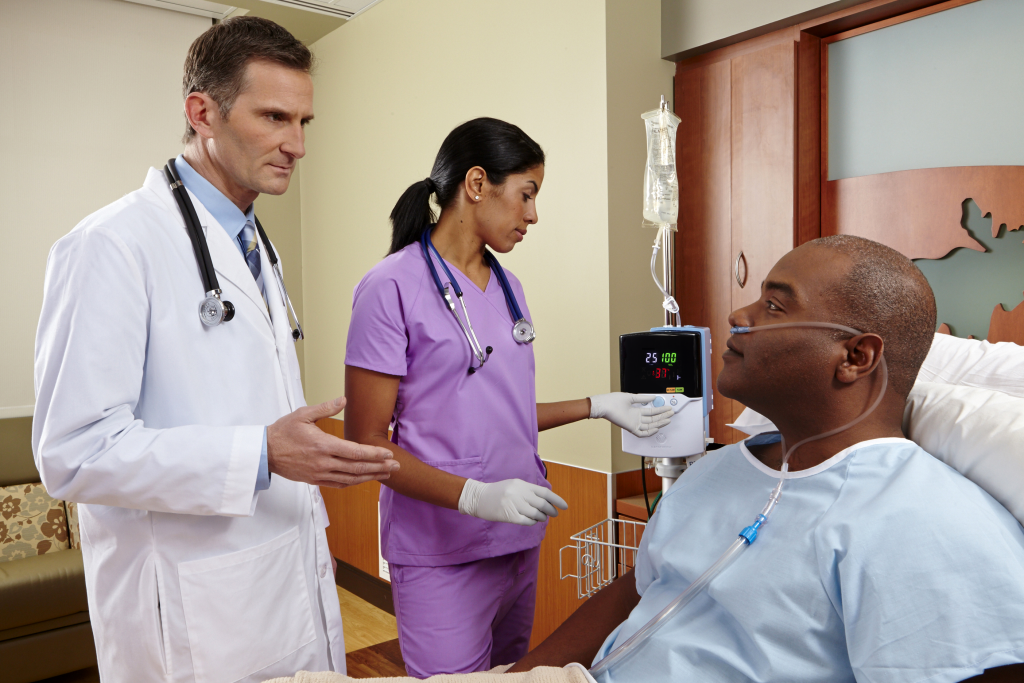What is Mask-Free NIV?

For patients in respiratory distress, non-invasive positive pressure ventilation (NiPPV) has been the first-line approach for decades. It’s a respected standard of care, but not all patients can tolerate this mask-based therapy.
Facial hair that prevents a seal, nausea that creates an aspiration risk, mask anxiety, and discomfort are just a few reasons patients cannot wear the mask. Studies indicate that over 30% of patients cannot tolerate the mask, and nurses we asked at the 2018 National Teaching Institute of the American Association of Critical Care Nurses reported 70% or more of their patients experienced anxiety from mask application. In addition, NiPPV requires patient coaching, sometimes even sedation, to keep the patient on the therapy.
Compared to the negative-pressure “iron lung” original approach to non-invasive therapy, non-invasive positive pressure ventilation (NiPPV) was a leap forward in patient comfort and clinical usability. NiPPV has been relied on in common clinical usage for decades as a way for respiratory distress patients to avoid intubation.
What would the next leap in non-invasive ventilation look like?
It’s Time for a New Approach to NIV
High velocity therapy uses a simple nasal cannula interface and can treat hypercapnia, hypoxia, and dyspnea in spontaneously breathing patients with outcomes equivalent to those of NIPPV[1]
Rather than relying on positive pressure, high velocity therapy uses a high-velocity flow of precisely heated, humidified air to flush CO2 from the upper respiratory tract. Learn more about how high velocity therapy works.
For the patient, high velocity therapy represents a comfortable therapy that’s less reliant on coaching or sedation for compliance. It does not cover the mouth and allows eating, drinking, taking oral medication, and conversing with clinicians, family, and friends.
The next leap in non-invasive ventilation for spontaneously breathing patients is Mask-Free NIV™.
Meet Mask-Free NIV for Spontaneously Breathing Patients

The FDA recently created a new category for a product which uses high velocity therapy and has a label that states the product can be used to augment breathing in spontaneously breathing patients suffering from respiratory distress in a hospital setting.
The FDA’s new category follows on substantial clinical evidence, including a recent randomized clinical trial which found high velocity therapy to be non-inferior to NiPPV in spontaneously breathing patients.
Mask-Free NIV for spontaneously breathing patients doesn’t entirely replace NiPPV in the clinical toolkit, but it offers an appealing alternative for most patients in undifferentiated respiratory distress, including those who experience mask intolerance issues or mask anxiety, or in settings where healthcare professionals feel there’s benefit to the patient receiving therapy while being able to speak, eat, and drink.
At the time of publication, Vapotherm’s Precision Flow Hi-VNI™ system is the only device placed in this FDA category. While the category is new, Vapotherm’s high velocity therapy, which is incorporated in all of its Precision Flow systems, is already trusted and used by over 1,250 hospitals, and has been used in therapies for over 1.5 million patients.
Ready to learn more?
REFERENCES
[1] Doshi, Pratik et al. High-Velocity Nasal Insufflation in the Treatment of Respiratory Failure: A Randomized Clinical Trial. Annals of Emergency Medicine, 2018. https://www.ncbi.nlm.nih.gov/pubmed/29310868